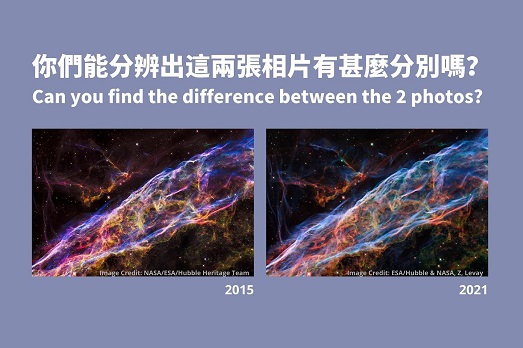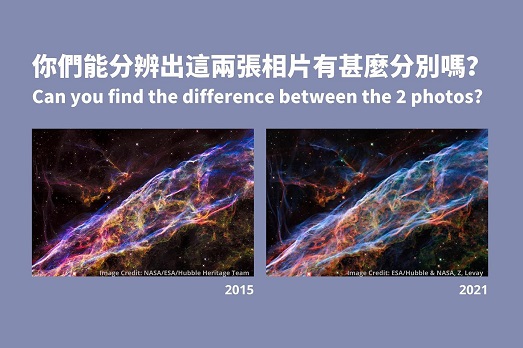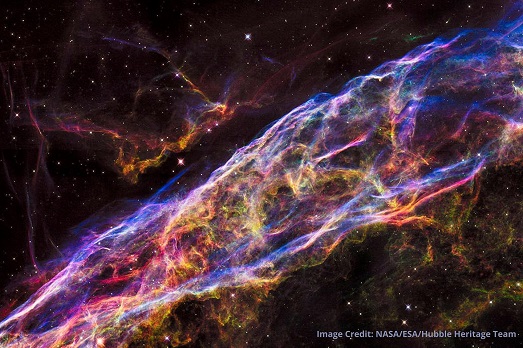NASA's Hubble Space Telescope team discovered a new nebula 2,100 light-years away from the Earth. What do you think it should be called?
The team actually did not discover a new nebula but revisited the Veil Nebula with a photo processed using new techniques. The Veil Nebula is the visible part of the Cygnus Loop (a supernova remnant in the constellation Cygnus), about 2,100 light-years from the Earth.
Notice the differences in the two photos? This reprocessed photo was taken by the Hubble's Wide Field Camera 3 through five different filters. The new technique highlighted the details of threads of ionised gases in the nebula (doubly ionised oxygen in blue; ionised hydrogen and ionised nitrogen in red), making the colour of the photo more vivid.
Nebula photos are always vibrant. Do you know that only some of the colours are real? Different elements in the nebula emit light in different colours after being excited, e.g. hydrogen emits red light, oxygen emits green light and sulfur emits blue light and photos that show the real colour of the elements are real-colour images. To the contrary, some elements in the nebula emit waves that are invisible to naked eye. Photographers use different wave-sensitive cameras to capture these wavelengths and add colours to facilitate viewing; scientists can also add different colours to indicate different elements, and these are false-colour images.
Post-production of photos are a piece of cake nowadays, everyone can be a photo post-production master with a phone in hand. Can we now see photos that are unprocessed? You can figure that out yourself!





